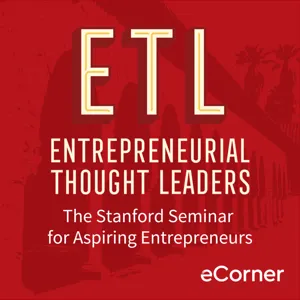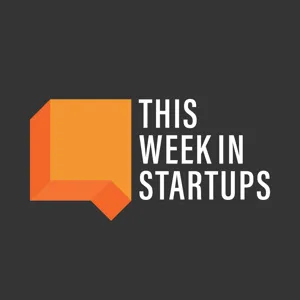Podcast Summary
Exploring 3D Printing with Ben Bolden: 3D printing offers unlimited possibilities but not all printers are created equal, with differences in capabilities and materials.
The Capital One Venture X Card offers unlimited 2X miles on every purchase and comes with premium travel benefits, making everyday purchases worthwhile for extraordinary trips. Orlando, Florida, is a prime destination for business travel with numerous conference and meeting venues and high-end dining options. Unfortunately, Chuck, a longtime co-host of Stuff You Should Know, is no longer with the show. Ben Bolden, a fan and first-time co-host, steps in to discuss 3D printers, which have become increasingly popular but not all 3D printing is created equal, with different types and capabilities. The Stuff You Should Know team had a 3D printer in their video department, but its small production capacity and limited plastic options made for a slow and bright-green printing process. Despite these challenges, 3D printing remains an exciting and innovative technology.
Revolutionizing manufacturing with 3D printing: 3D printing creates objects by adding material layer by layer, has potential in medical fields, and is a game-changer in manufacturing
3D printing, also known as additive manufacturing, is a process of creating three-dimensional objects by adding material layer by layer, rather than the traditional method of carving or machining. This discussion highlighted the potential of 3D printing going beyond novelty items and into the realm of creating human tissue, as well as the connection between 3D printing and traditional 2D inkjet printers. The term "printing" for 3D technology is a misnomer, but it is used due to the similarities in form and function with traditional printers. The reverse of the traditional manufacturing process, 3D printing has the potential to revolutionize industries and medical fields.
Revolutionizing manufacturing with 3D printing: 3D printing reduces costs, time, and carbon emissions compared to traditional methods, and its potential applications are vast, from everyday items to complex structures and even future technologies like artificial organs.
3D printing is an innovative technology that allows for the creation of three-dimensional objects layer by layer. It has the potential to revolutionize industries and make manufacturing more customizable and efficient. Originating in the industrial sector in the 1980s, 3D printing, also known as additive manufacturing, has significantly reduced costs, time, and carbon emissions compared to traditional prototyping methods. The technology is becoming increasingly accessible, with prices for printers and materials decreasing, making it a viable option for home use. The possibilities for 3D printing are vast, from everyday items to complex structures like chess pieces and even potential future applications like artificial organs. The technology's potential impact on industries and transportation sectors is significant, leading to a shift towards customization and reducing the need for mass production and transportation.
From Hull's invention to modern 3D printing techniques: Charles Hull's photo polymerization technique started 3D printing. Today, direct and binder printing dominate, each with unique advantages. Other methods like multi-jet modeling and FDM offer distinct benefits.
3D printing, an innovation first introduced in the mid-80s, has come a long way since its inception. Charles Hull's technique of photo polymerization, where a laser turns plastic dust into a solid object, was one of the earliest forms of 3D printing and is still in use today. Two main processes, direct and binder printing, dominate the industry. Direct printing, which looks like a hot glue gun, melts and cools plastic or wax to build objects layer by layer. Binder printing, on the other hand, uses a powder polymer as the base substance and binds it together with a liquid. Both processes have their advantages, with binder printing being faster due to fewer passes. Multi-jet modeling and Fused Deposition Modeling (FDM) are other techniques, each offering unique benefits. The 3D printing landscape is currently crowded with various methods competing to become the industry standard, much like how inkjet printing emerged as the dominant technology among the many printer types in the past.
Revolutionizing manufacturing with 3D printing: 3D printing can create intricate structures using minimal material, leading to lighter, more fuel-efficient products and cost savings. It can be used with various techniques and materials, including metals and plastics, and has potential applications in various industries, from aerospace to hospitality.
3D printing technology has the potential to revolutionize manufacturing by allowing for the creation of intricate structures using minimal material, resulting in lighter and more fuel-efficient products. This technology, which involves building objects layer by layer, can be used with various techniques such as binder printing and photopolymerization, and can be applied to various materials including metals and plastics. This not only leads to cost savings but also reduces waste and increases structural efficiency. For instance, in the production of airplane parts, 3D printing can result in lighter and more fuel-efficient hinges, ultimately reducing the overall weight of the plane and leading to significant fuel savings and reduced CO2 emissions. Additionally, 3D printing can enable individuals to monetize their unused spaces by turning them into Airbnbs, providing an opportunity to earn extra income. Overall, the potential applications of 3D printing are almost endless, from creating complex structures to enabling individuals to make extra money from their homes.
Creating a 3D Printed Object: 3D printing involves designing, converting, and printing a 3D object using specialized software and hardware.
3D printing involves several key steps: first, creating a three-dimensional design using Computer-Aided Design (CAD) software; second, converting the CAD design into a format (STL) that the printer can understand; and third, transferring the design to the printer and starting the printing process. The process can be complex and may require some technical knowledge, but the end result is the creation of a physical object from a digital design. It's important to note that mistakes can happen during the process and that it may take some time and practice to get good results. Additionally, there are costs associated with the process, such as the cost of the printer, the cost of the materials used, and the cost of replacement parts for the printer. Overall, 3D printing offers a unique way to create physical objects from digital designs, but it requires some investment and effort.
Considering the costs and safety measures of 3D printing: 3D printing brings numerous benefits but also involves expenses and safety precautions. It's revolutionizing industries and providing opportunities for individuals, but requires protective gear and a significant investment for the printer itself.
3D printing, while offering numerous applications from industrial manufacturing to art, also comes with its own set of expenses and precautions. For instance, the removal process after printing can involve wearing protective gear due to the use of toxic chemicals. Additionally, the cost of a 3D printer itself can be a significant investment for those who don't have the means. On the brighter side, the technology is revolutionizing industries such as aerospace and healthcare by speeding up production and creating lighter, more customized products. For individuals, it can provide an opportunity to make extra income through home sharing platforms like Airbnb. Overall, while 3D printing offers exciting possibilities, it's important to consider the costs and safety measures involved.
Revolutionizing industries with additive manufacturing: Additive manufacturing, or 3D printing, is transforming industries by producing end products in various sectors like healthcare, automotive, and art, offering new possibilities and efficiencies
Additive manufacturing, also known as 3D printing, has revolutionized various industries, particularly in the realms of industrial manufacturing and healthcare. Initially, it transformed prototyping by enabling the creation of models and prototypes. Now, it has advanced to producing the actual end product, such as medical implants, car parts, and even artificial organs. The technology is also impacting art and commerce, allowing for customized pieces and designs that can be sold and manufactured on demand. Additionally, there's a DIY revolution with 3D printers like RepRap, which can be built from scratch, further democratizing the technology. Overall, additive manufacturing is changing the game in numerous sectors, offering new possibilities and efficiencies.
Revolutionizing industries with open-source 3D printing: 3D printing allows for constant improvement and innovation through open-source designs and relatively low-cost hardware, with potential applications ranging from indestructible objects to addressing global issues.
3D printing is revolutionizing various industries by making it possible to create parts and even entire products using open-source designs and relatively low-cost hardware. This collaborative, open-source nature of 3D printing allows for constant improvement and innovation. The technology's potential applications range from creating indestructible objects to addressing global issues like poverty and even food production. However, it's important to note that 3D printing currently requires a significant amount of energy and is not yet efficient enough for large-scale manufacturing. Despite these challenges, the potential benefits of 3D printing are vast, and it's an exciting technology to watch as it continues to evolve.
3D Printing: Plastic Emissions, Piracy, and 3D-Printed Guns: 3D printing raises concerns over plastic emissions and potential health hazards, alternative materials like ceramics and metals are being explored, piracy is a challenge in the 3D printing world, and 3D-printed guns pose a significant challenge to gun control laws
The use of plastic filament in 3D printing, especially in home settings, raises concerns about emissions and potential health hazards. While efforts are being made to introduce alternative materials like ceramics and metals, plastic remains the main choice for most 3D printers. Another intriguing topic discussed was the issue of piracy in the 3D printing world, where people can create and sell unlicensed figurines or even print guns at home. This raises ethical and legal questions, but it's important to note that industries like music and movies have also dealt with piracy. Lastly, the creation of 3D-printed guns, such as the one made by Cody Wilson, poses a significant challenge to gun control laws. These guns can be made with a small metal component that might not be detected by metal detectors, allowing for easy production and distribution of unregistered firearms.
Complexities of responsibility and morality in 3D printing: Interviewee believes it's not his responsibility to govern 3D printing use, and the topic raises legal and moral gray areas
Responsibility and morality are complex issues when it comes to new technologies like 3D printing. During a discussion, the interviewee expressed his views on the topic, stating that it's not his responsibility to govern the use of 3D printing, and it's a gray area regarding who is responsible legally and morally. The conversation also touched upon the outdated nature of an article about 3D printing and the discovery of wild parrots in their backyard. Listeners were encouraged to watch a documentary about the parrots and connect with the podcast on various social media platforms. Overall, the conversation highlighted the complexities and evolving nature of technology and its impact on society.
Social media for kids with safety features: Zigazoo is a kid-focused social media platform ensuring safety through built-in privacy protections. Britney Spanos and Rob Sheffield's podcast explores iconic songs and their stories.
Zigazoo is a social media platform designed specifically for kids where they can create and share videos in a safe and moderated environment. The platform's focus on safety is emphasized through built-in privacy protections for users' online data. Meanwhile, on a different note, Britney Spanos and Rob Sheffield host the 500 Greatest Songs podcast, where they explore and discuss the greatest songs ever made according to Rolling Stone's influential list. Listeners can tune in to learn about the stories behind iconic tracks from artists like Fleetwood Mac and The Ronettes, as well as modern classics from The Killers.




